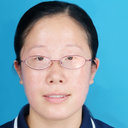Temporal Gene Expression Profiles after Focal Cerebral Ischemia in Mice.
Ključne besede
Povzetek
A cascade of pathological processes is triggered in the lesion area after ischemic stroke. Unfortunately, our understanding of these complicated molecular events is incomplete. In this investigation, we sought to better understand the detailed molecular and inflammatory events occurring after ischemic stroke. RNA-seq technology was used to identify whole gene expression profiles at days (D1, D3, D7, D14, D21) after focal cerebral ischemia in mice. Enrichment analyses based on Gene Ontology (GO) and Kyoto Encyclopedia of Genes and Genomes (KEGG) terms for the differentially expressed genes (DEGs) were then analyzed. Inflammation-related genes that were significantly expressed after stroke were selected for analysis and the temporal expression patterns of pro-inflammatory and anti-inflammatory genes were reported. These data illustrated that the number of DEGs increased accumulatively after cerebral ischemia. In summary, there were 1967 DEGs at D1, 2280 DEGs at D3, 2631 DEGs at D7, 5516 DEGs at D14 and 7093 DEGs at D21. The significantly enriched GO terms also increased. 58 GO terms and 18 KEGG pathways were significantly enriched at all inspected time points. We identified 87 DEGs which were functionally related to inflammatory responses. The expression levels of pro-inflammation related genes CD16, CD32, CD86, CD11b, Tumour necrosis factor α (TNF-α), Interleukin 1β (IL-1β) increased over time and peaked at D14. Anti-inflammation related genes Arginase 1 (Arg1) and Chitinase-like 3 (Ym1) peaked at D1 while IL-10, Transforming growth factor β (TGF-β) and CD206, which were induced at 1 day after cerebral ischemia, peaked by 7 to 14 days. These gene profile changes were potentially linked to microglia/macrophage phenotype changes and could play a role in astroglial activation. This study supplies new insights and detailed information on the molecular events and pathological mechanisms that occur after experimental ischemic stroke.



